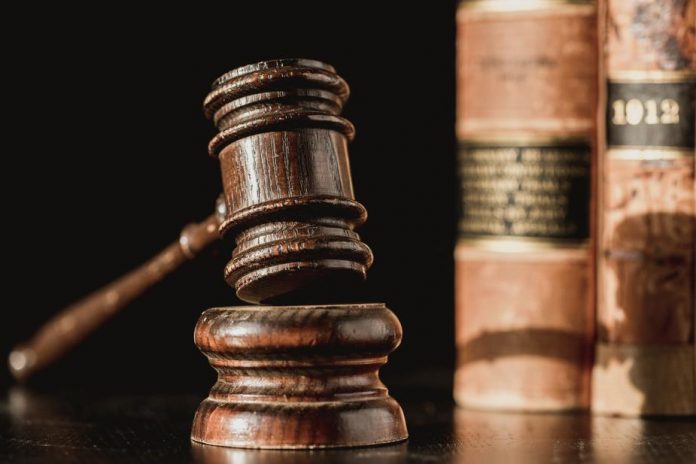This article is written by Ankur Mukherjee, Brainware University.
Dated: 13/05/2020
The Guest Speaker: Anirudh Hariani is the Counsel at Bombay High Court. He practices in Civil & Corporate litigation. He is alumnus of Govt. Law College Mumbai.
The Host: Komal Shah is the initial team member at LawSikho. She has built the entire vertical and is managing P&L for a significant portion of her business. She is the co-founder and the content head at LawSikho. She recruits and manages her own team at LawSikho.
Table of Contents
What is defined as Public Policy?
In any society, governmental entities enact laws, make policies, and allocate resources. This is true at all levels. Public policy can be generally defined as a system of laws, regulatory measures, courses of action, and funding priorities concerning a given topic promulgated by a governmental entity or its representatives. Individuals and groups often attempt to shape public policy through education, advocacy, or mobilization of interest groups. Shaping public policy is obviously different in Western-style democracies than in other forms of government. But it is reasonable to assume that the process always involves efforts by competing interest groups to influence policymakers in their favor. A major aspect of public policy is law. In a general sense, the law includes specific legislation and more broadly defined provisions of constitutional or international law. There are many ways that the law can influence how survivors of violence against women are treated and the types of services they receive.
Likewise, legislation identifies areas in which research grants can be funded and often determines the amount of funding allocated. Thus, it is not surprising that public policy debates occur over proposed legislation and funding. In this context, advocacy can be defined as attempting to influence public policy through education, lobbying, or political pressure. Advocacy groups often attempt to educate the general public as well as public policymakers about the nature of problems, what legislation is needed to address problems, and the funding required to provide services or conduct research. Although advocacy is viewed as unseemly by some in the professional and research community, it is clear that public policy priorities are influenced by advocacy. Sound research data can be used to educate the public as well as policymakers, thereby improving the public policy process.
What are the roots of Public Policy?
Public policy is an intentional course of action or inaction followed by government in dealing with some problem or matter of concern. Public policies are thus governmental policies; they are authoritative and binding on people. Individuals, groups, and even government agencies that do not comply with policies can be penalized through fines, loss of benefits, or even jail terms. The phrase “course of action” implies that policies develop or unfold over time. They involve more than a legislative decision to enact a law or a presidential decision to issue an executive order. Also important is how the law or executive order is carried out. The impact or meaning of a policy depends on whether it is vigorously enforced, enforced only in some instances, or not enforced at all. A Model of the Policy-Making Process.
The policy-making process is often viewed as a sequence of stages or functional activities. One illustration of such a model is shown below. This model can be used to analyze any of the issues discussed in this book. Although models such as these can be useful, it is important to remember that they are simplifications of the actual process. Moreover, models for analyzing the policy-making process do not always explain why public policies take the specific forms that they do. Nor do models necessarily tell us who dominates or controls the formation of public policy. Identification of an issue that disturbs the people and leads them to call for governmental intervention. Government recognition that a problem is worthy of consideration for governmental intervention. Identification of alternative approaches to addressing the problems placed on government’s agenda..The formal selection of public policies through legislative, executive, judicial, and bureaucratic means. The allocation of resources to provide for the proper implementation of public policies. The actual administration or application of public policies to their target. The determination of a policy’s accomplishments, consequences, or shortcomings.
How can we revive India’s growth story?
The structural versus cyclical distinction is extremely important because this has a direct bearing on the choice of policies to boost economic activity. If the slowdown is only cyclical, then there is no need for a long-term plan to boost growth. Short-term measures are what should be looked at. However, if there’s a structural element to the slowdown, then this means that some of the key ingredients that contributed to growth are not available any more (or are no longer helping the cause of growth). This means economic policy has to be re-strategized to find new potential drivers of growth. It is entirely likely that the slowdown in economic activity is a result of a mix of structural and cyclical factors. This will then require both short-term and long-term measures to promote growth. The most common argument put forth by people who believe the slowdown is cyclical is the following.
The Indian economy suffered two big back-to-back shocks before the Narendra Modi government took over in 2014. The first was the global financial crisis of 2008, which adversely affected export demand. Then came “policy paralysis” during the second United Progressive Alliance (UPA) government, which led to several big-ticket projects being stalled. This was followed by a complete aversion to decision-making in the government. These two developments played havoc with credit cycle as borrowers were unable to pay the huge loans they took in anticipation of the boom continuing, and banks were saddled with huge Non Performing Assets (NPAs). This led to the “twin-balance sheet” problem in the economy with banks being short of funds to lend, and entrepreneurs not having the appetite to invest more given the already pending loans on their books.
The government claims that the twin-balance sheet crisis is on its way to being resolved, with recapitalization provisions for government-run banks and the Insolvency and Bankruptcy Code (IBC) to deal with NPAs. A look at investment data from the Centre for Monitoring Indian Economy (CMIE) suggests a bleaker picture. New investment announcements, an indicator of intent rather than actual investments, have been falling continuously since 2014. That even investment announcements are not picking up at a time when the government thinks the twin balance sheet crisis is in its last leg, suggests that entrepreneurs are not optimistic about future economic activity. This is also seen from the fact that the value of dropped investment projects has been increasing in the recent period. This means that entrepreneurs are not confident about implementing their existing plans, which makes it extremely unlikely that new investment plans will be made. The value of investment projects completed has been nearly stagnant in this period. The short point is that entrepreneurs do not see the current slowdown as merely cyclical.
What are the socio-economic conditions in public policy?
The Socio Economic Status (SES) is an important determinant of health, nutritional status, mortality and morbidity of an individual. SES also influences the accessibility, affordability, acceptability and actual utilization of available health facilities. There has been a lot of discussion of late in the country regarding the number of people living below the poverty line (BPL families). They vary from 42% and 26% in rural and urban India. They also differ based on the different committees that had been formed to look into the problem. There is a need to identify the actual beneficiaries who will be benefitted by the government programs/subsidies. One of the tools available to measure the problem is the identification of SES of the family by applying the SES scales.
There are many different scales to measure the SES of a family. BG Prasad classification proposed in the year 1961 is a scale based on per capita monthly income (modified in 1968 and 1970) and has been used extensively in India. In rural areas Pareek classification based on nine characteristics viz. caste, occupation, education, level of social participation of head of the family, landholding, housing, farm power, material possession and total members in the family is widely used. Modified Kuppuswamy scale is commonly used to measure the SES in the urban communities. The scale includes the education, occupation of head of the family and income per month from all sources. To get current income group, a conversion factor calculated based on current All India Consumer Price Index (AICPI) is applied. The Government of India in the National Family Health Survey (NFHS – II) had used the Standard of Living Index (SLI) scale which contains 11 items viz. house type, source of lighting, toilet facility, main fuel for cooking, source of drinking water, separate room for cooking, ownership of the house, ownership of agricultural land, ownership of irrigated land, ownership of livestock, ownership of durable goods for measuring the SES both urban and rural areas for the entire country.
However, each of these scales available for measurement have their own advantages and disadvantages. The question asked is which of these classifications best measures SES of the population. The present study had explored the usefulness of SLI scale as a tool for measuring SES of the family in both urban and rural areas. In this background the present study was conducted with the objective to compare the most commonly used SES scales in rural and urban setting.
How homosexuality deals with public policy?
Where does Public Policy stand on for Homoesexuals in India?
Today, homosexuality and queer identities may be acceptable to more Indian youths than ever before, but within the boundaries of family, home and school, acceptance of their sexuality and freedom to openly express their gender choices still remain a constant struggle for LGBT (lesbian, gay, bisexual, transgender) people. In urban India, where social media and corporate initiatives have created increasing awareness of LGBT rights, the scenario looks more upbeat for gay men than for transgender people or lesbian women. While urban LGBT voices that are heard through several online and real-world platforms form an important part of LGBT activism, these expose only a small part of the diverse challenges faced by the community. Far away from gay pride parades, meet-ups and heated discussions on Twitter, families in rural India have their own ways of dealing with LGBT individuals. In some parts, secret honour killings are planned so that the only way for a young gay man to survive is to run away in the cover of the night to some city, with no money or social support.
In other parts, lesbian women are subjected to family-sanctioned corrective rapes, which are often perpetrated by their own family members. Vyjayanti Vasanta Mogli, a transwoman LGBT activist and public policy scholar at Tata Institute of Social Sciences, Hyderabad, who has openly spoken about her abuse at school, says that lesbian women and transmen in rural areas end up at the bottom of the hierarchy when it comes to basic human rights within the unit of family and village. She invokes B.R. Ambedkar when talking of the rural socioeconomic environment. “Ambedkar thought of the village as a unit of violence and that is most true for LGBT issues,” she says. “Village medics and babas often prescribe rape to cure lesbians of homosexuality. Refusal to marry brings more physical abuse. Stories of family acceptance that you see on TV and other media are more of an urban phenomenon.” Even in educated urban India, suicides by lesbian women make headlines every year. It comes as no surprise then that a tribunal recently ruled that the only danger to lesbians in India is from their own families. A recent study found that one of the major factors that results in the stigmatization of LGBT people is parental reaction towards homosexuality.
The study goes on to conclude that most LGBT people are acceptable to family only if they agree to behave like heterosexuals. Prince Manvendra Singh Gohil, whose story of coming out has been well-documented in the media over the past several years, now heads several initiatives to help LGBT people, including the Lakshya Trust that works for HIV/Aids prevention in the LGBT community. He says LGBT people must not get carried away by what they see in the media.
What are the fundamental facets and the concepts of Common Law?
In law, common law (also known as judicial precedent or judge-made law, or case law) is the body of law derived from judicial decisions of courts and similar tribunals. The defining characteristic of “common law” is that it arises as precedent.
In cases where the parties disagree on what the law is, a common law court looks to past precedential decisions of relevant courts, and synthesizes the principles of those past cases as applicable to the current facts. If a similar dispute has been resolved in the past, the court is usually bound to follow the reasoning used in the prior decision (a principle known as stare decisis). If, however, the court finds that the current dispute is fundamentally distinct from all previous cases (called a “matter of first impression“), and legislative statutes are either silent or ambiguous on the question, judges have the authority and duty to resolve the issue (one party or the other has to win, and on disagreements of law, judges make that decision). The court states an opinion that gives reasons for the decision, and those reasons agglomerate with past decisions as precedent to bind future judges and litigants. Common law, as the body of law made by judges, stands in contrast to and on equal footing with statutes which are adopted through the legislative process, and regulations which are promulgated by the executive branch (the interactions among these different sources of law are explained later in this article). Stare decisis, the principle that cases should be decided according to consistent principled rules so that similar facts will yield similar results lies at the heart of all common law systems.
Questions by audience
What are the challenges in Patent Illegality?
The Supreme Court has, in Patel Engineering Limited v. North Eastern Electric Power Corporation Limited, reaffirmed the scope of patent illegality, post the 2015 amendment of the Arbitration and Conciliation Act, 1996 (“Act”), as a ground to challenge a domestic award under Section 34 of the Act. Disputes between Patel Engineering Limited (“Patel Engineering”) and North Eastern Electric Power Corporation Limited (“NEEPCL”), arising out of works contracts for three separate packages, culminated in three arbitral awards dated March 29, 2016.
One of the issues in each of the three arbitral proceedings was which clause of the conditions of contract would apply to decide the rate at which Patel Engineering was entitled to extra payment for additional quantities of lead. The arbitrator’s interpretation was in favour of Patel Engineering in all three awards. NEEPCL challenged the awards before the Additional Deputy Commissioner (Judicial), Shillong, who upheld the awards. In an appeal under Section 37 of the Act, the Meghalaya High Court set aside the order of the Additional Deputy Commissioner (Judicial), Shillong. Patel Engineering filed Special Leave Petitions before the Supreme Court, which were dismissed without reasons. Patel Engineering then filed review petitions before the Meghalaya High Court on the ground that the judgement of the High Court suffers from errors apparent on the face of the record insofar as it did not take into consideration the amendments made to the Act in 2015 by the Arbitration and Conciliation (Amendment) Act, 2015 (“Amendment Act”). The High Court dismissed the review petitions, which led to the present challenge before the Supreme Court.
Why is it difficult to enforce foreign award in India?
Prior to the enactment of the Arbitration and Conciliation Act, 1996 (“Act”) the enforcement of foreign awards were governed by the Arbitration (Protocol and Convention) Act, 1937 and the Foreign Awards (Recognition and Enforcement) Act, 1961 (“1961 Act”). The law on annulment of domestic awards was governed by the Indian Arbitration Act, 1940 (“1940 Act”). The 1961 Act was enacted by the Indian Legislature to implement the New York Convention.
What is the golden rule for enforcing foreign award?
An international commercial arbitration which is governed under the arbitration regime of International Chamber of Commerce (‘ICC’) can either be seated in India or be seated in a foreign country. While the enforcement and execution of an Indian seated arbitral award would be governed by the Part I of the Arbitration & Conciliation Act, 1996 (“Indian Act”), the enforcement of foreign seated awards would be governed by the provisions of Part II of the Indian Act. In India “foreign awards” are acquiescent under Part II of the said Act which specifically is in consonance with the provisions of the 1958 – New York Convention on the Recognition and Enforcement of Foreign Arbitral Awards (“New York Convention“) or the Convention on the Execution of Foreign Arbitral Awards 1927 – (“Geneva Convention”). India is a signatory to both the New York Convention as well as Geneva Convention. Section 44 of the Indian Act provides that in order for a foreign award to be recognized as such under Part II, Chapter I (New York Convention Awards) certain conditions need to be fulfilled, which are as under:
- The territory should be signatory to the New York Convention
- The Indian Central Government should have notified in the Official Gazette that it has reciprocal provisions with such a territory.
- Therefore any foreign award received by a party/country under the ICC arbitration regime who is a signatory to either New York Convention or the Geneva Convention can get the same enforced within the territory of India.
LawSikho has created a telegram group for exchanging legal knowledge, referrals and various opportunities. You can click on this link and join:
 Serato DJ Crack 2025Serato DJ PRO Crack
Serato DJ Crack 2025Serato DJ PRO Crack











 Allow notifications
Allow notifications



